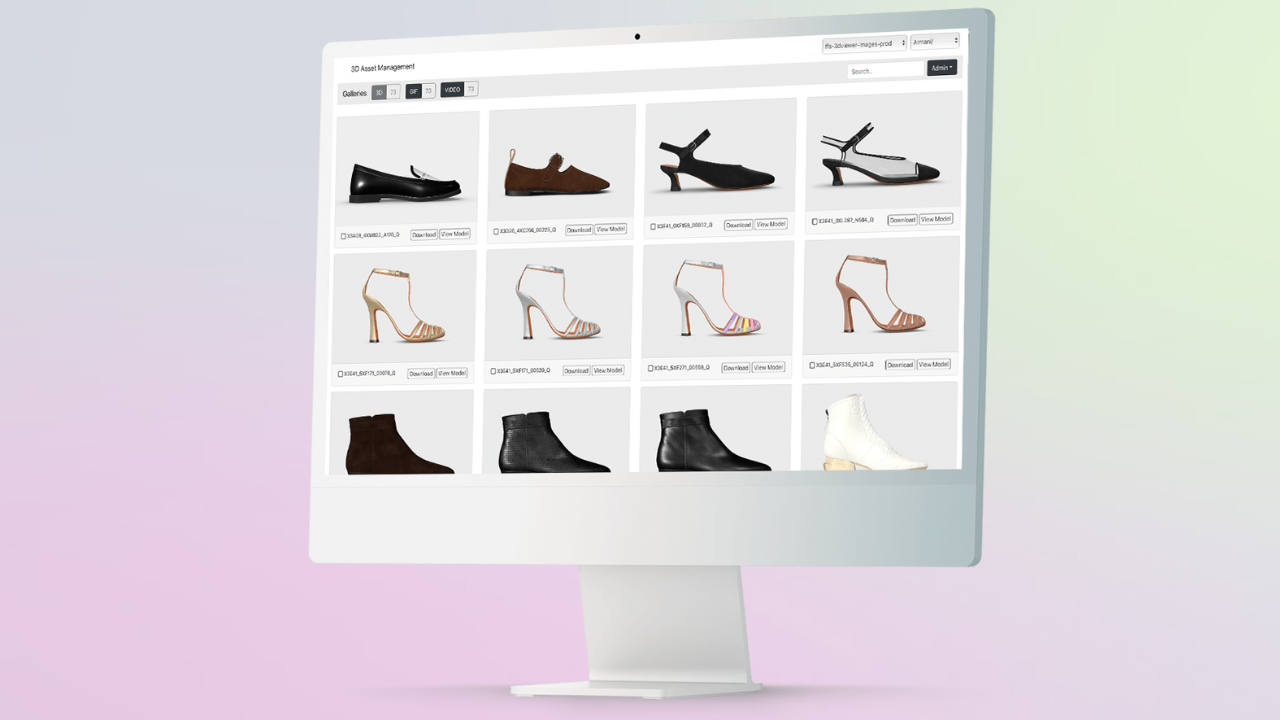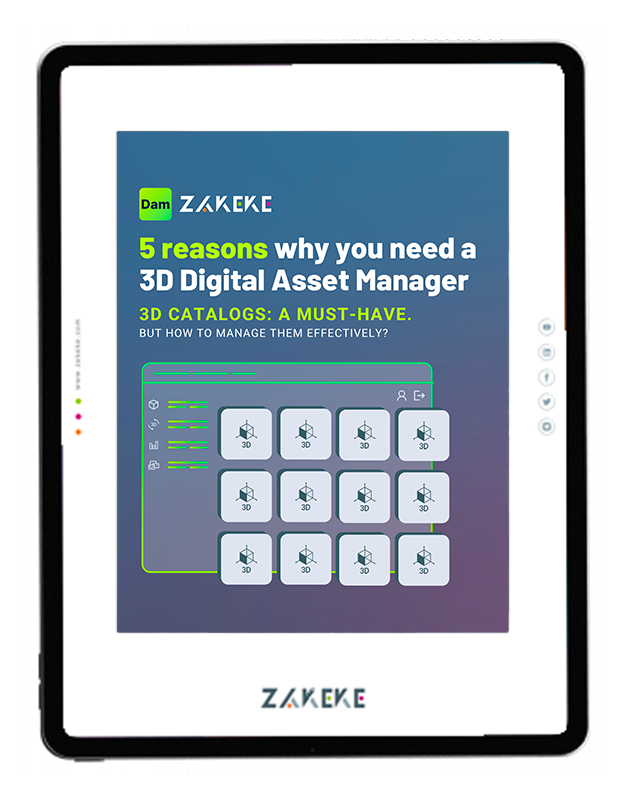E-commerce businesses have a wealth of tools these days to better serve customers, and attract new ones.
One of the most innovative pieces of tooling that you may not be trying yet is the 3D catalog, which can easily be incorporated into ecommerce websites. 3D experienceis revolutionizing the e-commerce world and it’s definitely time to embrace the 3D revolution!
Learn about the ins and outs of the 3D catalog and the numerous benefits you can expect to enjoy when you dive into this new shopping frontier.
Understanding the 3D Clothing Catalog
A 3D catalog transforms static images and standard product descriptions to revolutionize the shopping experience.
With 3D modeling, customers can interact with digital products listings in unprecedented ways. They can zoom in to inspect textures and seams and view items from all perspectives, creating an immersive and engaging experience.
By offering a preview of their products in 3D, businesses provide consumers with a detailed understanding of each item, bridging the gap between online and in-store shopping — which is critical as retailers’ in-person capabilities shrink with the skyrocketing increase in storefront rent.
10 Benefits of Going 3D With Your Catalog
Let’s talk about 10 advantages you may get the chance to enjoy if you develop a 3D catalog.
Allows Customers to See How Products Will Look on Them
Think of 3D catalogs as being like online changing rooms, better than any ordinary website experience they would have.
After all, when a customer goes to a regular website, they’ll maybe just get some basic two-dimensional photos of models, with no chance to customize or see themselves with the products.
However, when a prospective customer goes to a website with a 3D catalog, they’ll be able to see products from every conceivable angle, with the chance to zoom in and out. They’ll also be able to input their measurements and personal characteristics like skin tone to see exactly how an item will look on them. This level of product visualization is critical to building a great customer experience in the digital age.
Valuable Conversion Tool for Ecommerce
Businesses can invest enormous amounts in SEO or paid advertising to get prospective customers to their websites. But that’s only half the battle of earning a person’s business. You still have to get them to buy.
A 3D catalog is a terrific way to help guide someone through the buyer’s journey. Instead of just getting information from a retailer or brand’s website, they’ll get a personalized experience that can translate to a higher likelihood that they will do business.
New Way for Customers to Engage
It hasn’t always been easy in recent years for clothing businesses to attract customers. A business has to do a lot to earn a sale, whether it’s in person or online.
Creating a 3D catalog provides another way to reach customers in good times or bad. These catalogs give customers an avenue to find a clothing retailer or brand and engage with it as they’re comfortable.
Engagement can mean different things, too. It will be easier to get a customer through the virtual door the first time by having a virtual catalog. It might increase the time they spend on an ecommerce website. And it can also boost the likelihood of a customer visiting a physical location of a store, if they can first virtually try on a few items without feeling pressure.
More Sustainability
3D catalogs boost sustainability in e-commerce by significantly reducing product returns and eliminating waste from unsold stock and samples. This approach allows customers to explore products in detail virtually, leading to more informed purchasing decisions and fewer returns.
Additionally, by negating the need for physical samples, 3D catalogs prevent the accumulation of unsold goods, aligning with eco-friendly practices by minimizing waste. This sustainable model not only benefits the environment but also enhances operational efficiency for businesses, marking a significant step forward in responsible e-commerce.
Easily Shareable Resource
Every business would love to get word-of-mouth referrals. When people hear about a company or a solution from someone they trust, they’re more likely to take action and become lasting customers.
With 3D catalogs, customers have a chance to instantly create referrals for businesses. At the push of a button, customers can share a link to a 3D catalog. Customers can quickly and effectively help get the word out about the awesome garments that are available through these resources.
In enabling these types of catalogs, businesses create shareable resources for their customers. And businesses effectively create a means of generating referrals at scale. It’s a valuable and efficient means of advertising.
No More Samples & Photoshoots
3D catalogs are transforming the way products are presented, markedly decreasing the reliance on physical samples and conventional photoshoots. These digital solutions enable businesses to showcase hundreds of product variants in 3D, offering a lifelike, interactive experience that traditional photography simply can’t match.
This innovation not only significantly reduces costs associated with producing and photographing samples but also accelerates the go-to-market timeline, allowing companies to efficiently present an extensive range of products to potential buyers with ease. As a result, 3D catalogs are becoming an indispensable tool for businesses looking to enhance their product visibility and appeal.
Easier Upsells and More Return Business
We believe that customization is the secret to retention.
After all, Forbes noted that 46% of customers will purchase more when served personalized experiences.
It’s easy for businesses to grab intent data from 3D catalog interactions. When they know what items certain visitors are interested in, they can recommend related garments or items that are actually suited for them — thus increasing that all-important personalization.
Creating personalized experiences can build trust and loyalty. A customer will know that every effort is being made to give them a unique and tailored (no pun intended) visit to their virtual store. They’ll be treated as a unique individual rather than someone being given a one-size-fits-all approach.
Fewer Returns
Returns plague retailers, with the National Retail Federation noting that for every $1 billion in sales, there will be $145 million in returns. That’s around 15% of business lost after the point of sale, making it hard for companies to know their bottom lines with any certainty.
The problem might be especially bad for ecommerce merchants, since a customer has little way of knowing how a garment is going to look, fit, and feel without a chance to see it up close.
With a 3D catalog, however, customers are more likely to know exactly what they’re getting. They’ll be able to make more intentful purchases of items they’ll hopefully value for the long haul. This will mean fewer returns and, at the end of the day, a clearer bottom line for businesses.
Less Work for In-Store Staff
Think fashion businesses. Real-life fitting rooms come with a clear cost, for an assortment of different reasons.
Staff must be on hand to assist customers with questions while they’re in the fitting rooms. They also must keep up with stocking all day long. Plus, clothes that get tried on too many times but not sold might need to be cleaned or gotten rid of.
Businesses can duck all of this with the help of 3D catalogs. If there are any staff to assist customers with queries, it can start with AI chatbots. And, damage and loss of garments should be practically erased.
For staff, this can mean less time having to be spent on menial tasks and more on work that critically helps a clothing business, such as on-floor selling.
Boost Sales For Your Clothing Business With a 3D Catalog
Increasingly, customers seem to be voting with their feet and seeking out brands or businesses that meet their values. Implementing a 3D catalog as a merchant can help you meet your best buyers where they are.
Embracing this innovative tool not only enhances the shopping experience but also streamlines operations and fosters sustainable practices. It’s time for online businesses (and not only for them!) to take the leap into the future of ecommerce with 3D catalogs.
Graham Womack
Journalist with Innovation Focus
Graham Womack is a writer. His work as a journalist has appeared in a wide assortment of publications, including the Washington Post, San Francisco Chronicle and Sacramento Bee. Separate this, he has written extensively for corporate clients about the ever-evolving world of B2B SaaS solutions.













